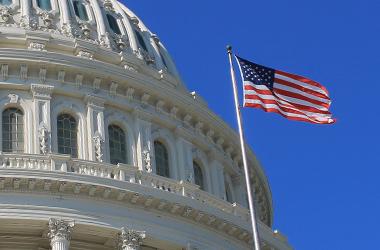
Industry News | CWP
Highlights from the 11/14 – 11/15 Advisory Board Meeting
November 29, 2018
November 29, 2018
CWP
Industry News
On November 14-15, 2018 the Advisory Board on Toxic Substances and Worker Health held it’s first in-person meeting. Department of Labor (DOL) Secretary, Alexander Acosta, appointed the board members in August 2018.
The Board membership was decreased from fifteen members to twelve. Seven members from the previous board were not reappointed. The Secretary appointed four new members. The new board possess the same high-quality expertise in the medical and scientific fields as well as first-hand experience in the Department of Energy’s nuclear weapons facilities.
The current board members are (new members are denoted with an “N”)
Scientific Community:
John M. Dement, Ph.D, CIH, Duke University Medical Center
George Friedman-Jimenez, MD, Dr.Ph, Bellevue Hospital Center, NYU School of Medicine
(N) Marek Mikulski, MD, MPH, Ph.D, University of Iowa
Kenneth Z. Silver, D.Sc., S.M., East Tennessee State University
Medical Community:
(N) Manijeh Berenji, MD, MPH, Boston Medical Center
Victoria A. Cassano, MD, MPH, Performance Medicine Consulting
CHAIR: Steven Markowitz, MD. Dr.Ph, Queens College, CUNY School of Public Health
Carrie A. Redlich, MD, MPH, Yale School of Medicine
Claimant community:
Kirk D. Domina, Hanford Atomic Metal Trades Council
(N) Ron Mahs, International Association of Heat and Frost Insulators and Allied Workers, Local Union 46
Duronda M. Pope, United Steelworkers
(N) Calin Tebay, Hanford Beryllium Program
DOL provided a review of the program and a presentation on the ethical rules the board members must observe.
DOL informed the board that now more than 50% of Part E claims are submitted to the industrial hygienist (IH) contractor for opinions on exposure. While DOL audits contract medical consultants’ (CMC) reports on a quarterly basis, no such audit has been conducted for IH reports.
The board reiterated their desire to review a sample of IH and CMC reports. DOL rejected this idea since they conduct audits for CMC reports. The board reminded DOL that the law passed by Congress in 2014 requires them to conduct their own audits.
DOL informed the board that they will be releasing a new version of the Procedure Manual (PM). It is currently in the editing stage. The board asked if they can review and comment on the changes before it is released to the public. They noted that DOL accepted some of the board’s recommendations and these will be incorporated into the PM. The board wants to make sure the recommendations are accurately portrayed in the new version of the PM. DOL did not think providing the draft of the PM to the board would be feasible.
DOL asked this board to provide advice on 4 issues, https://bit.ly/2P1K51F:
- Parkinsonism, Parkinson’s Disease and Maganism – DOL struggles with claims for these diseases. They admitted that most of the guidance DOL relies upon is out of date. They would like the board to review the current medical literature and provide DOL which could then be used to “update program policy, health effect links and presumptions.”
- Occupational Health Questionnaire – The previous board provided DOL with suggestions to improve this questionnaire. DOL asks that the board revisit their recommendations and “provide specific, detailed edits to a draft, reviewing what DOL has proposed for use or recommend a different OHQ tailored to the needs of the program.”
- Health effects of radiological substances and non-cancerous diseases – DOL would like the Board to “research of peer-reviewed, human studies to ascertain whether there are additional non-cancerous diagnoses that the literature links to exposure to radiogenic sources such as uranium, plutonium, and other radionuclides such as americium based upon their toxicological properties.”
- Research to determine if diseases listed in the Site Exposure Matrix (SEM) have aliases – SEM includes aliases for some diseases. DOL would like to ensure that all aliases for diseases are listed in SEM.
The board discussed the previous recommendations, some of which are still open. One recommendation concerned adding other government toxicology databases, such the Environmental Protection Agency and the National Toxicology Program, to the SEM in addition to Haz-Map. DOL is reluctant to do that and asked the board to condense their recommendation. The board does not see the need to review these databases since they have already undergone the peer-review process. The board also noted that they don’t have the resources to undertake this task and suggested that Paragon, the contractor, which administers the SEM, take on this responsibility.
Another issue which the board debated in length was their recommendation that the CMCs receive the entire case file before rendering an opinion. DOL rejected this recommendation because it would undermine the claims examiner’s role as the Finder of Fact and would be burdensome to the CMC. One board member took a strong position opposing DOL’s response. She said that this is a critical defect in the claims process and noted that professionals would not issue an opinion without all the facts before them.
The board noted that DOL did not accept every recommendation. Both Ms. Rachel Leiton, Director of the Division of Energy Employees Occupational Illness Compensation, and Ms. Julia Hearthway, Director of DOL’s Office of Workers Compensation Programs, informed the board that they do not have to accept all recommendations. They explained that the board’s recommendations are debated internally with their experts – medical director, toxicologist, industrial hygienists and legal counsel. Only if those internal experts agree will the board’s recommendations be accepted.
The board requested DOL provide them with certain information such as the ten most commonly denied claims. The board agreed to have a teleconference in January, 2019 with their second in-person meeting in the spring.
